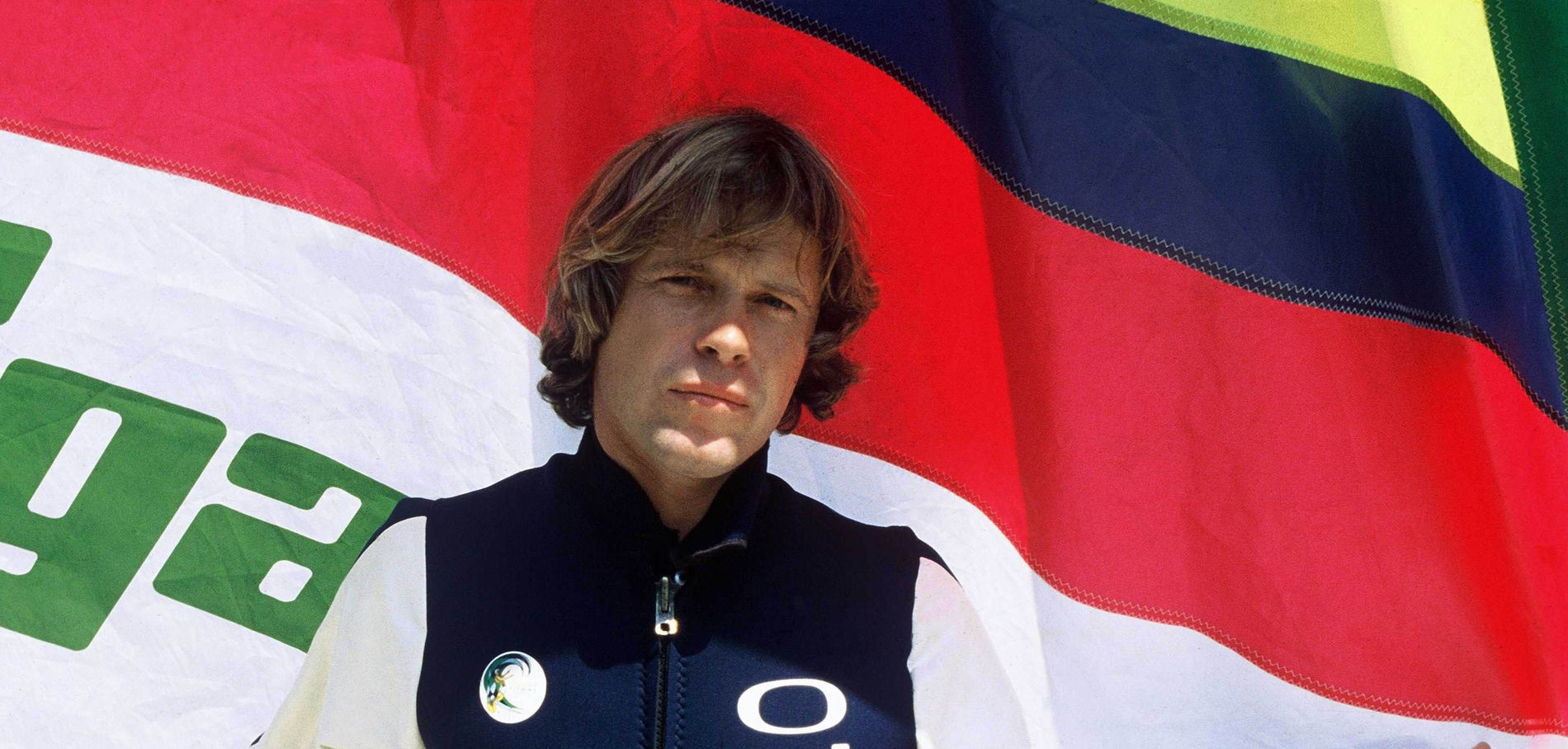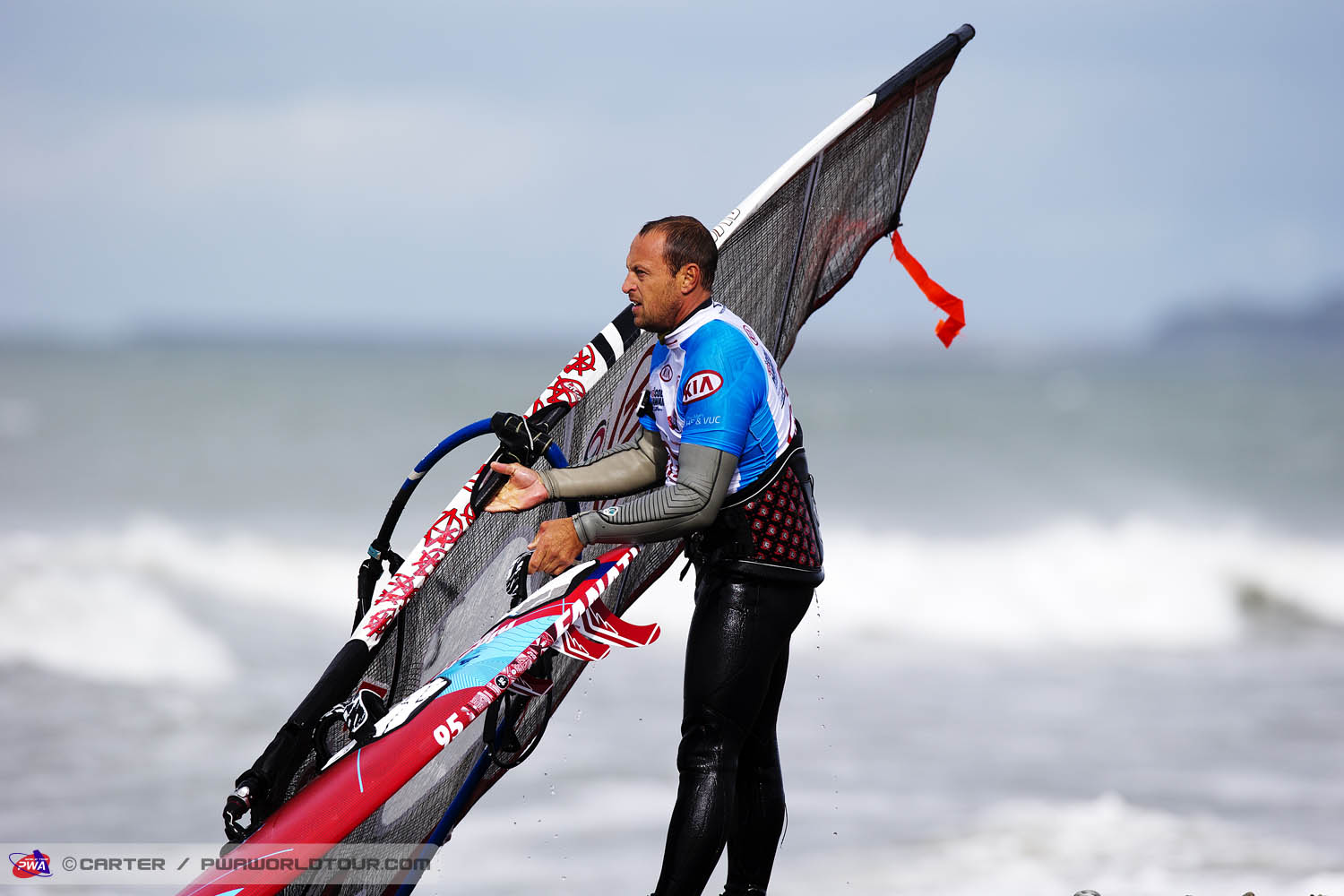As most sailors will know there are a whole host of key moments through windsurfing’s colourful history that make it unique. This heritage and legacy is constantly being updated, after all time never stands still. Here are a few key events to refresh memories or give insight to those ne wto windsurfing. We’re sure there are plenty more – what would you add?
Peter Chilvers invents the first windsurfer in 1958 on Hayling Island, UK.
Newman Darby invents the sailboard as we know it in 1964.
Hoyle Schweitzer/Jim Drake file first patent suit in 1968 against Peter Chilvers. The court rules in favour of Pete Chilvers. The case set a precedent for future patent suits.
Robby Naish the first world champ in 1976.
Derk Thijs breaks the 17 knot barrier for the first time, 1977.
Mike Waltze the first to sail Ho’okipa, Maui, in 1979.
In 1981 retractable daggerboards were introduced.
Fred Haywood smashed 30 knots during Weymouth (UK) Speed Trials in 1983.
Also in 1983 Gaastra introduced, and patented, the camber inducer. Brands had to pay a royalty to use the same technology.
Arnaud de Rosnay, adventure windsurfer and photographer disappears at sea in the Taiwan Strait, 1984.
Windsurfing is officially recognised as an Olympic event in 1984 (1992 for women)
Stephan van den Berg becomes first Olympic windsurfing gold medallist, Los Angeles.
Peter Boyd pioneers the forward loop during the early 80s.
In 1986 Pascal Maka steals the world speed record from Crossbow with 38.68 knots recorded in Sotavento, Fuerteventura.
Italian wave sailor Cesare Cantagalli busts out the cheese roll during 1986’s Aloha Classic.
Dave Kalama invents the goiter during late 80s.
Bjorn Dunkerbeck dominates comps through late 80s/early 90s.
Indoor windsurfing kicks off for the first time during 1990 in Bercy, Paris.
New Zealander Barbara Kendall wins the first ladies Olympic windsurfing comp in 1992.
1992 also saw custom board brand technology (vacuum sandwich construction) become mainstream.
1994 Witchcraft successfully manage to use Dyneema as the main fibre in their boards.
1995 Twinsers become a hype in wave boards
In 1997 Anders Bringdal unveils a prototype race sail of what would be the first shorter luff type sail – the Gaastra Total Flow F1.
In 1997 where all brands go back to single fins, Witchcraft continues to develop multifins and solve the problems of twinsers by adding a centre fin.
Bjorn Dunkerbeck wins a freestyle world title, 1998.
Also in 1998 the Transatlantic Windsurf Challenge takes place with tag team style racing being the format.
Formula windsurfing takes off during the late 90s.
Brit sailor Nik Baker (from Brighton) wins the Aloha Classic, Maui, in 1999.
Robert Teriitehau goes crazy with the first stalled double forwards busted in competition during 99’s Sylt PWA event.
Josh Stone, inventor of the vulcan and spock, becomes freestyle world champ in both ’99 and 2000.
In 2000 Brandon Bay, Ireland, serves up 50+ knot conditions for PWA competitors. During one particular day both port and starboard tack conditions deliver waves of over mast high.
Talented UK windsurfer Andy Funnell passes away having suffered from cardiac shock during a fall from his jetski during 2004.
Moreno twins dominate ladies competitive wave sailing from 2000 on.
Vaclav Hornik also launched Windguru in 2000.
A young Ricardo Campello takes freestyle windsurfing by storm with three consecutive freestyle world titles. He also invents a host of new moves along the way.
Supercross is also introduced to the PWA calendar in 2003.
Finian Maynard sets a new world speed record of 48.7 knots in 2005.
2005 Witchcraft experiments with the 4wfs and finds that toe-in on side fins both makes trifin boards faster and better turning.
GPSSpeedsurfing.com is also launched in 2008.
2009, in search of the ultimate light wind wave board, Witchcraft invents a new type flex tail, initially called the wasp tail.
2009 sees 15 year old Philip Koster push windsurfing to new levels as well as taking his first PWA event win in Pozo, Gran Canaria.
Attempting to solve the still existing limitations of Twinsers, 2010 Starboard is the first to introduce quad fins to windsurfing.
2010, using CFD, Witchcraft invents pre twisted side fins to further reduce drag enabling to use any size side fin.
2011 is when Dunkerbeck stages the biggest comeback of his career by winning the slalom world title 23 years after his first.
In 2012 Witchcraft invents the world’s strongest RDM extension weighing 507gr.
French sailor Antoine Albeau breaks 50 knots during the Luderitz Speed Challenge, Namibia, 2012.
Talented freestyler and filmmaker Andre Paskowski loses his fight against cancer in 2013.
WindSUP takes off with many paddlers utilising the sailing capabilities of their craft, 2013.
2013 was also the first year of the Red Bull Storm Chase.
2014 sees 1000+ windsurfers at Le Defi Wind in France.
Dunkerbeck announces his retirement from completion in 2014.
Planing inflatable windsurfing boards are introduced to the market, utilising technology from stand up paddle boarding at the end of 2015.
Pete Volwater passes away, 2015.
2015, Witchcraft introduces windsurf sails with stress line fibre orientation technology using off the shelf materials, creating affordable, repairable and durable sails.
The first exhibition windsurf foiling events takes place under the PWA umbrella during 2016 at La Torche, France, and Sylt, Germany.
2016 more brands are moving to trifins.
Newman Darby dies in 2016.
Speed sailor Dave White (Whitey) suffers a stroke in Mauritius during a windsurfing session in 2017.
Sarah-Quita Offringa continues her domination of PWA women’s freestyle and slalom in 2017.
Antoine Questel take the PWA foiling series win in 2017.
What next…?












